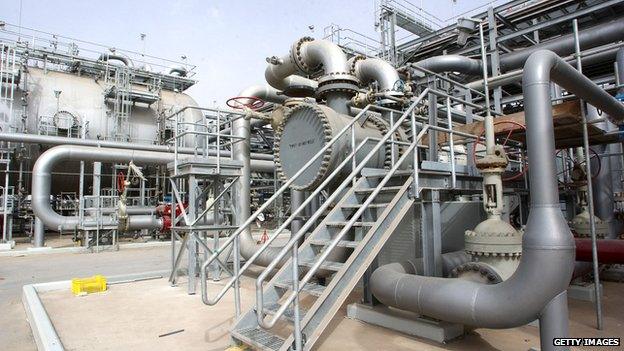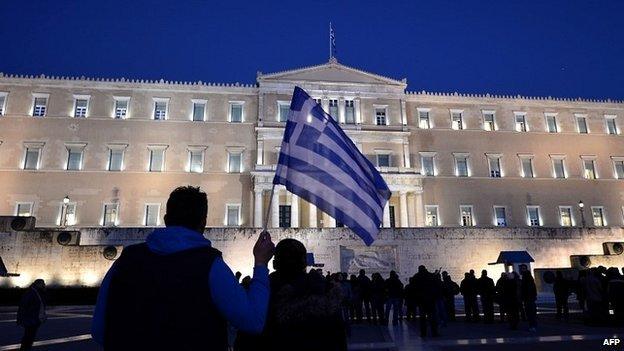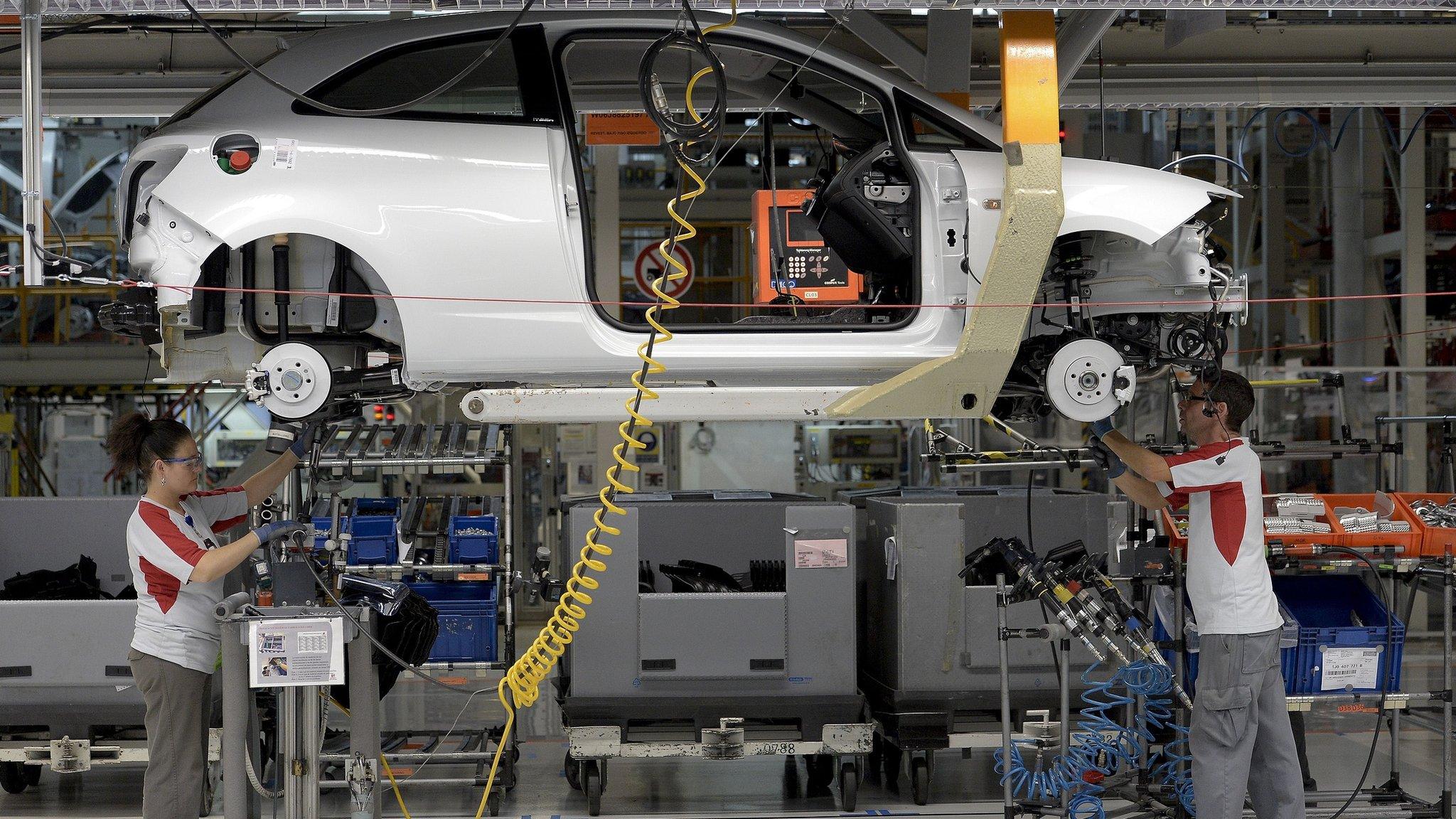Three reasons for optimism over the Eurozone economy
- Published

It is easy to be gloomy about the Eurozone's economic prospects. While GDP in the UK and US is now above its pre-crisis level, in the Eurozone it is still languishing below. But is there room for greater optimism?
A major economy being smaller than it was seven years ago is not something that happens often.
Unemployment remains stubbornly high and the latest flaring up of tension over a possible Greek bailout extension is yet another reminder that some of the structural issues in how the Euro was designed will continue to be a source of friction.
And now, new Eurostat figures, external show that consumer prices in the Eurozone fell by 0.6% in the last year: a possible sign of the early stages of a damaging deflationary slide.
But is the gloom overdone?
There are three reasons to think it might be - three reasons why Eurozone growth in 2015 may well surprise to the upside for the first time in years.
Reduced oil prices
The first reason is the reduction in oil prices. Since June 2014 world oil prices have more than halved, which - all things being equal - should be good news for an energy importer like the Eurozone.
In effect, this functions as a large tax cut for consumers and firms financed by overseas producers.
And although declining oil prices add further pressure to falling consumer prices in the Eurozone, this doesn't mean they should not be welcomed in Europe - even if Eurostat's figures suggest that the pace of decline in consumer prices is accelerating.
The fear has always been of a "debt-deflationary" cycle - a situation in which falling prices lead to reduced profits for businesses and subsequent wage cuts. In the event of a generalised fall in prices and wages, then the real burden of debt increases.
But for falling oil prices to be a cause of "bad deflation" rather than "benign disinflation", consumers and firms would have to save rather than spend their windfall from lower energy costs.

In that situation there would be no boost to demand, but there would be an additional downward pressure on prices. The early signs, however, are that this is not happening.
European retail sales grew strongly in the fourth quarter of last year, suggesting lower prices at the pumps are providing a stimulus to growth, rather than a drag.
Weaker currency
The second reason for cautious optimism is the fall in value of the Euro, which has lost almost 10%, external of its value against other currencies over the past year.
This makes European exports more competitive on world markets and should provide a boost to the single currency area's trade.
And thirdly, the European Central Bank last month - not soon enough - began a programme of quantitative easing (QE), electronically creating money to buy assets - usually government bonds - to consequently push down the value of interest rates.
One the biggest factors holding back Eurozone growth over the last few years has been a weak banking system. But even before the introduction of QE, there were indications, external that bank lending was starting to pick up.
Lower risk
So overall, healthier bank lending, a weaker currency and the additional kicker of an effective large tax cut for firms may well be enough to push growth higher.
A Greek bailout extension may be a case of "kicking the can down the road" rather than dealing with the fundamental problems, but it is also another reason for optimism about the Eurozone as a whole. It further decreases the risk of a nasty financial accident.

The Eurozone is often compared to the pre-World War Two gold standard - a commitment by participating countries to fix the prices of their domestic currencies in relation to a specified amount of gold.
In effect, the countries in the Eurozone no longer have an independent monetary policy, interest rates cannot be set in the pure national interest and exchange rates between countries are fixed - so fixed they have actually ceased to exist.
This means that if a country loses competiveness relative to its peers then it cannot regain it by devaluing its currency, and instead is forced to try and drive down prices and wages domestically to increase productivity, in a process known as internal devaluation.
In the 1920s and 30s that proved to be a recipe for disaster. A disaster that many think has been replayed decades later in the so-called periphery of the Eurozone - Greece, Ireland, Italy, Spain and Portugal.
'Something to celebrate'
Until recently the gold standard analogy has worked fairly well in explaining the dynamics of the Eurozone. One big difference being that leaving the gold standard, as opposed to the Euro, was at least relatively straightforward.
But that might now finally be changing. One big reason for that is the ECB's decision to increase the amount of Euros, through the use of QE. In terms of the gold standard, that is as if the central banks in the 1930s had suddenly discovered a lot of gold mines.
This removes some of what economists believe is an in-built bias towards disinflation in the Euro's design.
The Eurozone economy may be unlikely to reach the kind of growth rates on display in the UK and US this year, but 2015 looks set to be the best year for its economy since 2007. That is something to celebrate.
- Published24 February 2015

- Published13 February 2015
